How to do a bench press: advice for barbells & dumbbells, form tips and more
It’s the perfect exercise for building up strength in your chest, shoulders and triceps. This is your bench press guide

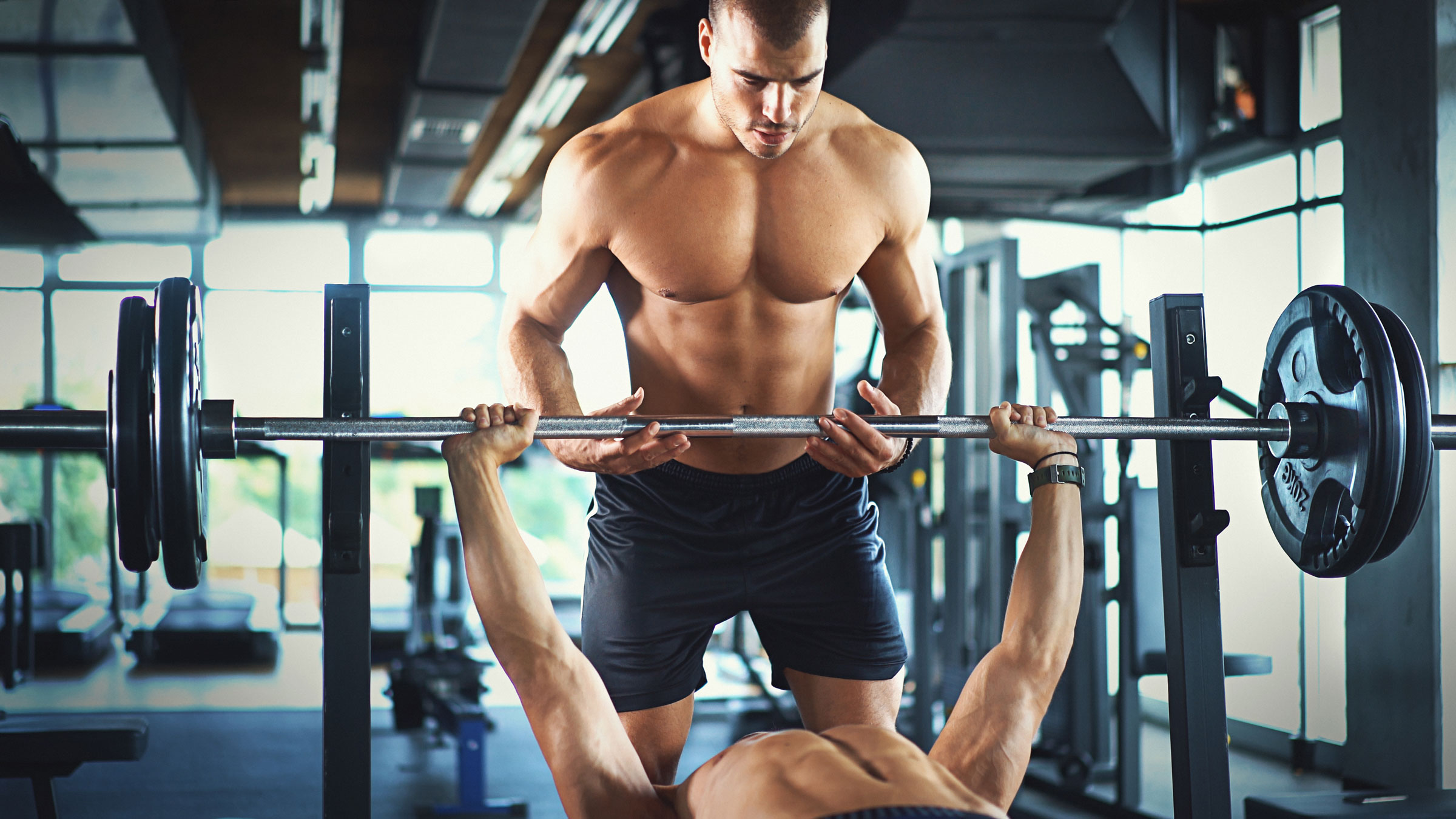
Push ups are excellent for building up strength in your chest, triceps, shoulders and core. It’s an exercise which needs no equipment to be performed successfully: all you need is a little bit of floor space, and they can be made easier or harder through a whole raft of variations.
However, if you want to build up even more strength in your chest and triceps, you should learn how to do a bench press, one of the best muscle-building moves around.
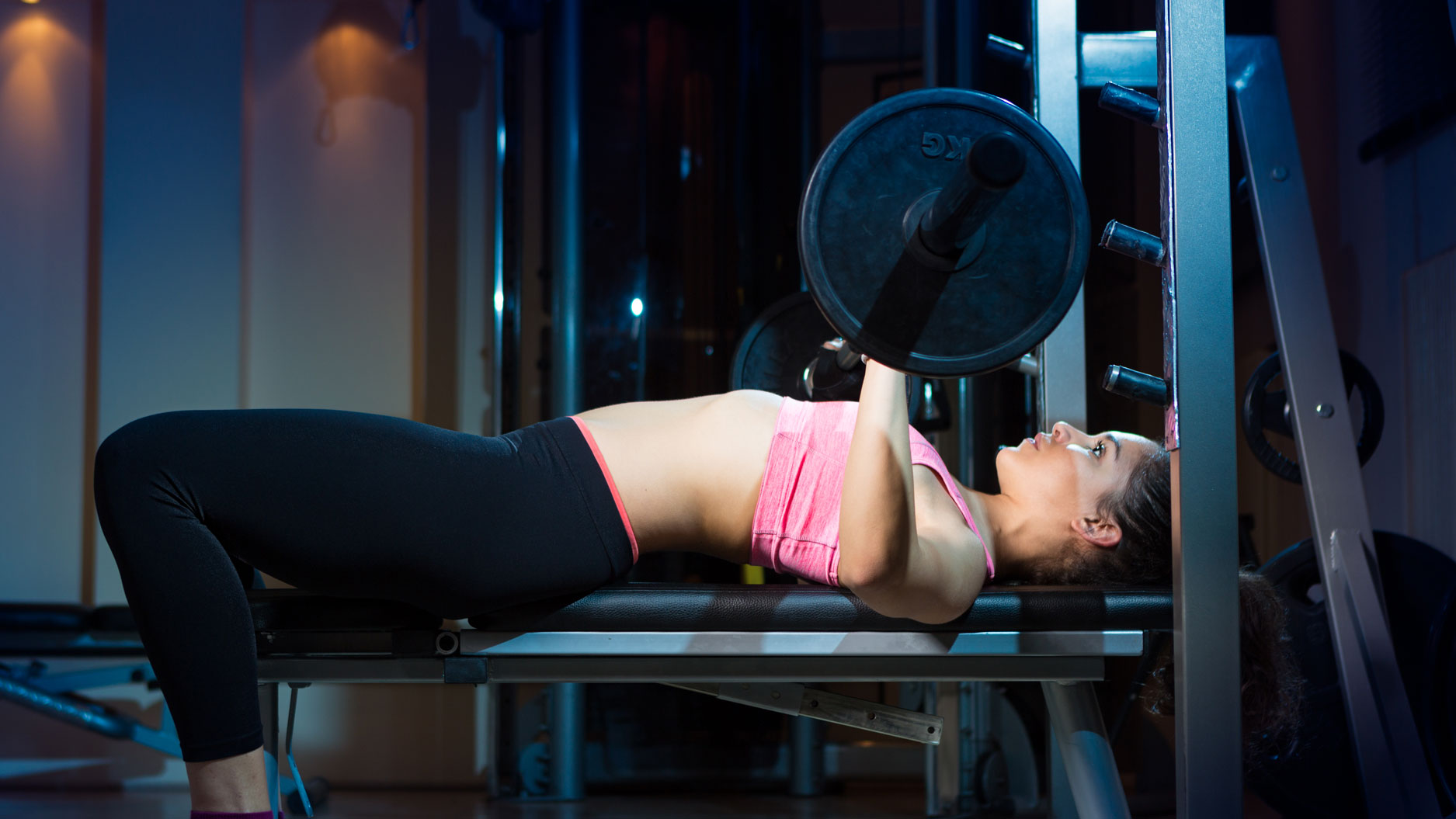
Like the push up, the bench press works your pectorals or chest muscles, your triceps and your shoulders. However, whereas push ups are always completed at an angle using part of your body weight, the bench press places you on a flat surface, pressing a heavy object upwards instead of your own body.
This makes it possible to put more stress on your chest and tricep muscles, helping them to become bigger and stronger. But the move isn’t just for bodybuilders: people of all abilities and all walks of life can use the bench press to stay healthy.
"The bench press, whether using barbells or dumbbells, is something that should be in every muscle-building programme," says PT and strength coach Rogan Allport. According to the Journal of Family Community and Medicine, bench pressing has been proven to increase bone density and reduce the risk of osteoporosis in adults. This means as well as keeping a physically stronger upper body, learning how to do a bench press will help you resist common injuries such as broken wrists after a nasty fall.
- Top tips for how to get a slim waist
- Explore how to lose weight on the keto diet
How to do a bench press: What equipment do I need?
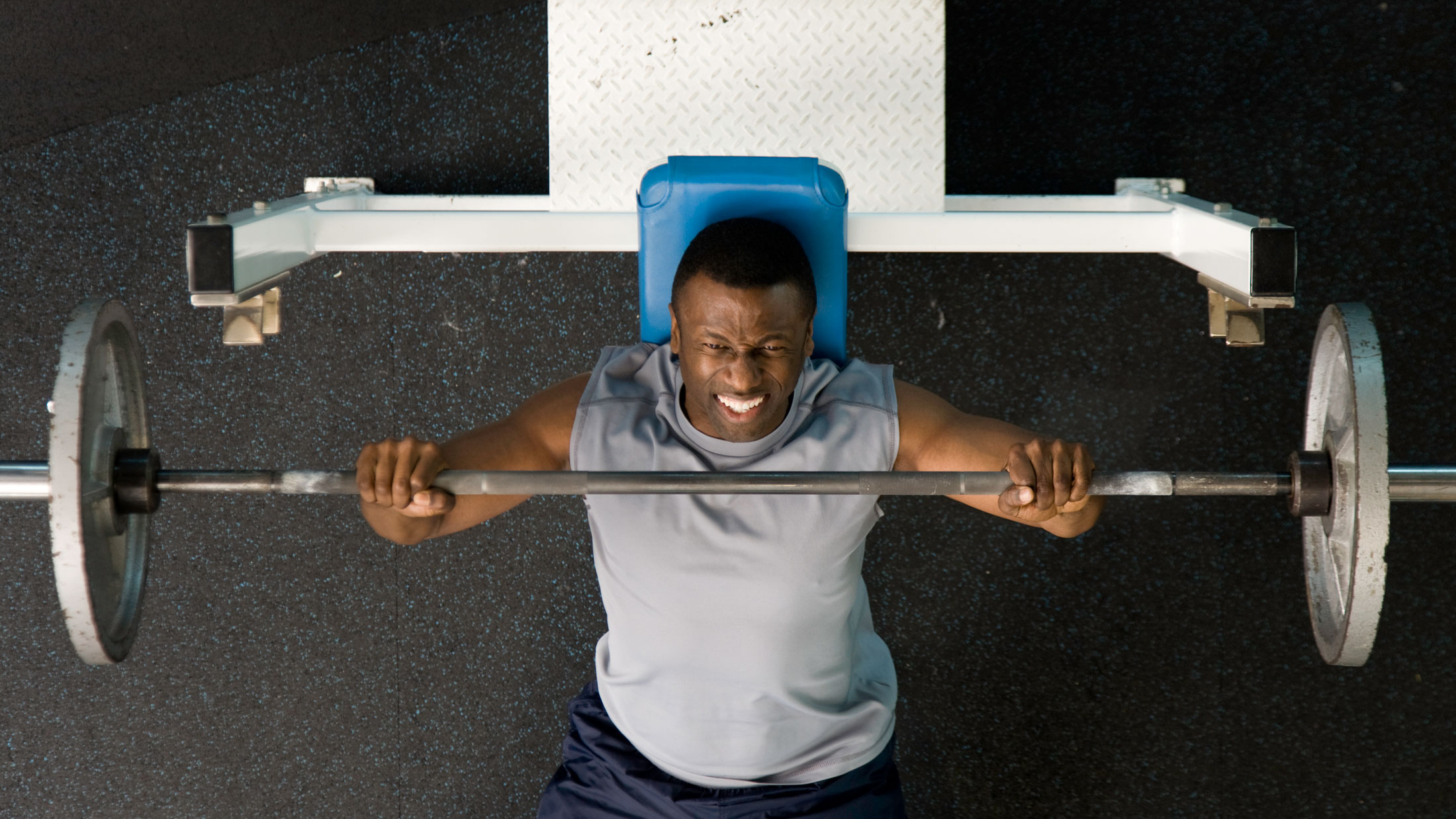
To start your bench press journey, you will generally need a flat exercise bench and a weight you are comfortable lifting. Some variations we’ll list below use different pieces of equipment, such as a Swiss ball or even just the floor, but it’s best to start off with the most basic iteration of the exercise. For most people, this will mean going to the gym.
There are roughly three types of weights you would usually use to bench press: a barbell, dumbbells or a smith machine. You could theoretically use weight plates, kettlebells or similar heavy equipment in a pinch, but these three are by far the most common.
Start your week with achievable workout ideas, health tips and wellbeing advice in your inbox.
Smith machines are barbells attached to guided rails. They are depicted as safer than barbells because they can only move up and down, and they are often used by serious heavy lifters or those worried about their stability holding a bar. However, a study published in the Journal of Sports Sciences found bench press and dumbbell press exercises that require more stability work more muscle groups, even activating the biceps. Therefore, it’s best to use either dumbbells or a barbell to start with.
How to do a bench press: Barbell
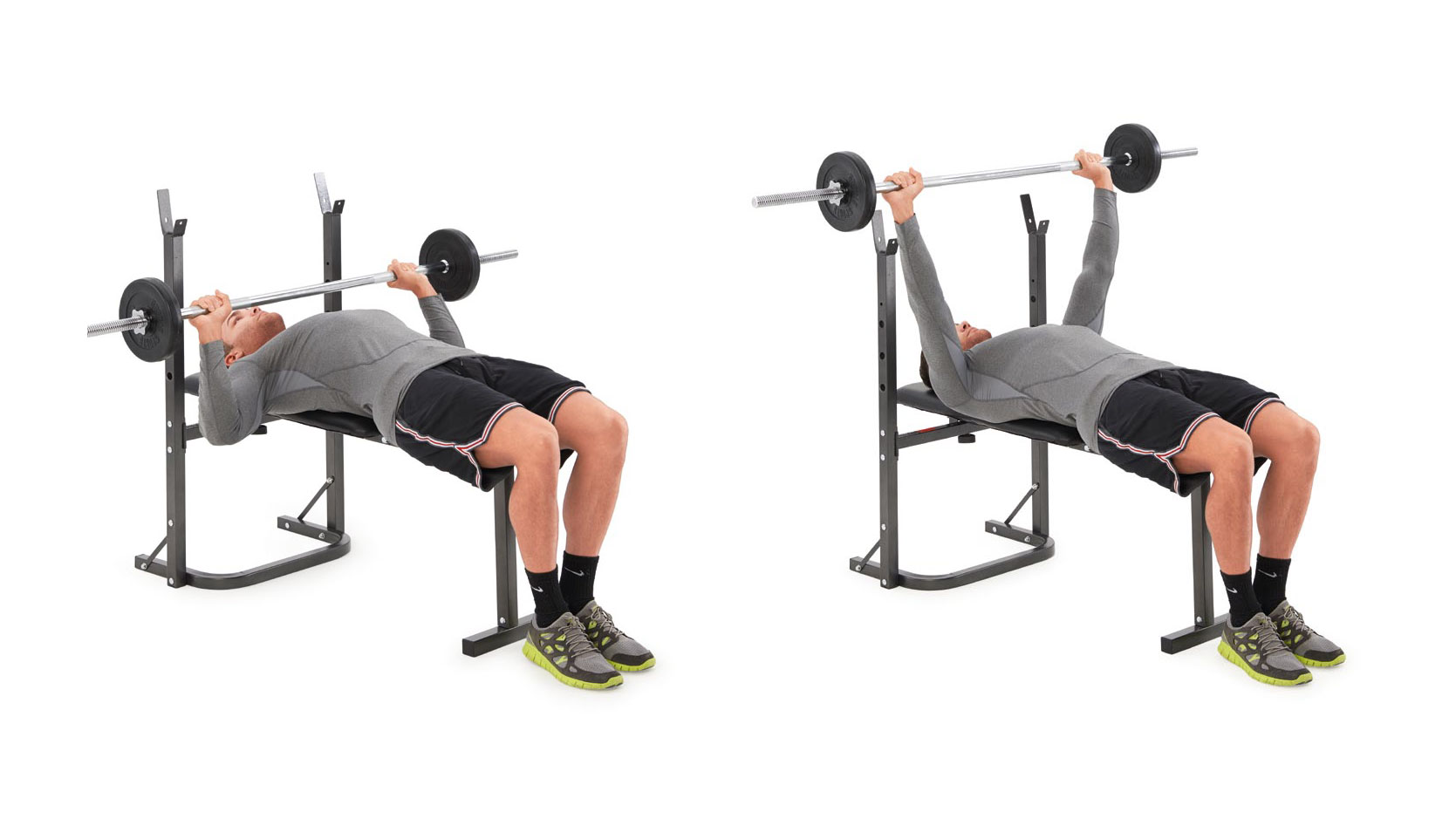
The bench press is a favourite of top athletes and keen weightlifters, who waste no time in telling you just how much weight they can press. Despite the negative connotations, it’s still a great exercise to tone those all important chest muscles.
For safety reasons, you should never try and bench press heavy weights without a "spotter", someone there to help you. Start off with light or medium weights.
- Lie flat on your back on a weights bench, with the barbell resting on the rack behind your head. Place your feet on the floor – your heels should be pushing into the ground.
- Pick up the barbell with an overhand grip, with your hands placed just wider than shoulder-width apart. Lower the barbell so that it’s just above your chest.
- Slowly and surely, push the bar upwards in a straight line, extending your arms straight. Imagine that you’re trying to push your shoulders into the bench, as this will help you maintain the correct body position as you straighten your arms.
- Pause, and then lower the barbell back down to the starting position to complete one repetition.
How to do a bench press: Dumbbells
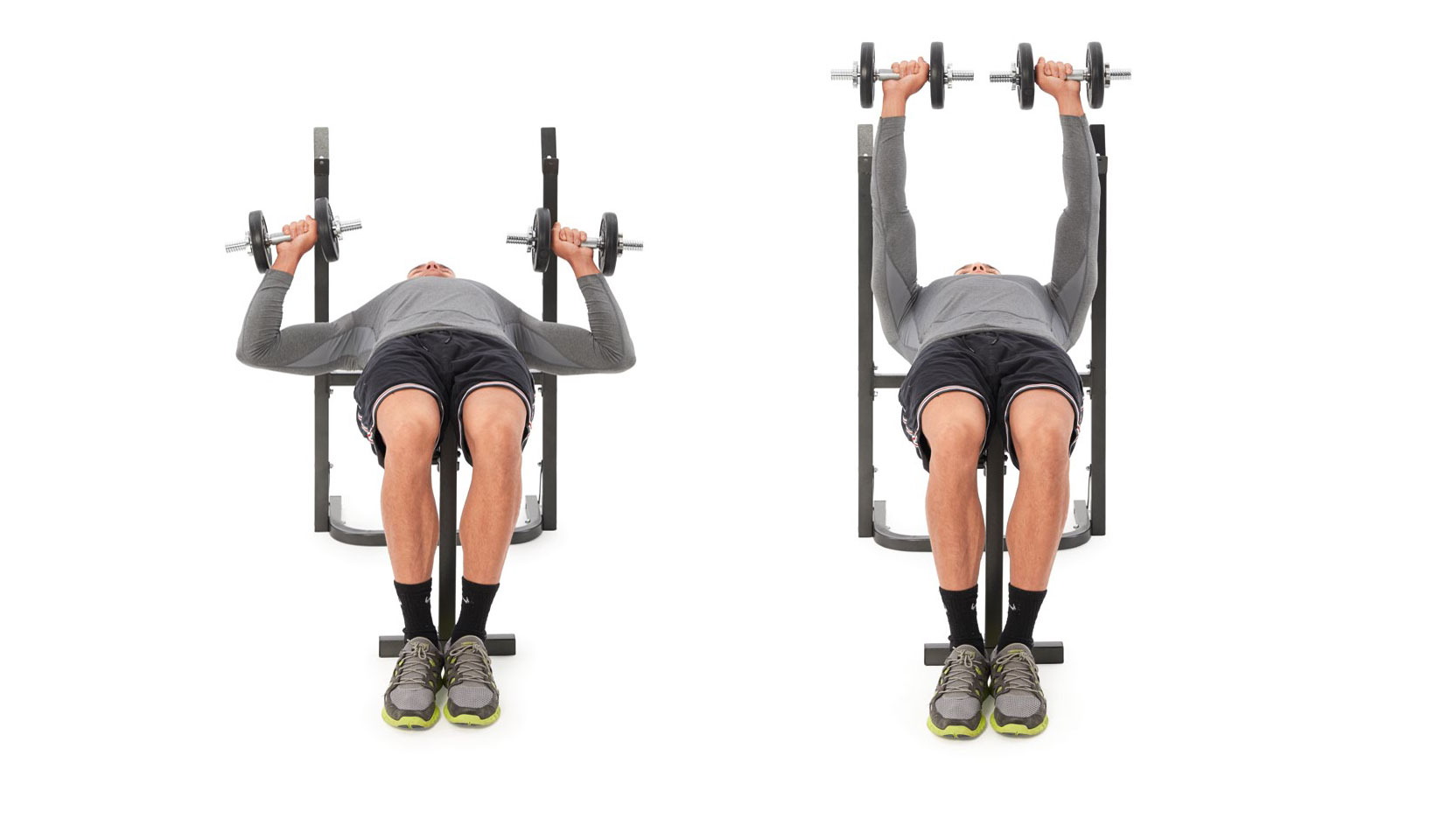
Did you know that you can bench press with dumbbells? Try it out – it offers a sterner test of form due to the stability required, especially with heavy weights.
- Pick up a pair of dumbbells with an overhand grip and lie flat on your back on a weights bench. Your legs should be together, or just apart. Hold the dumbbells just above chest height, with your arms bent at the elbows. Your wrists should be straight, with your palms turned slightly inward.
- Push the dumbbells upwards in a straight line as quick as you can, remembering to maintain good form. Your arms should be locked straight at the end of the move.
- Pause, before slowly lowering the dumbbells back to the starting position.
How to do a bench press: Common mistakes
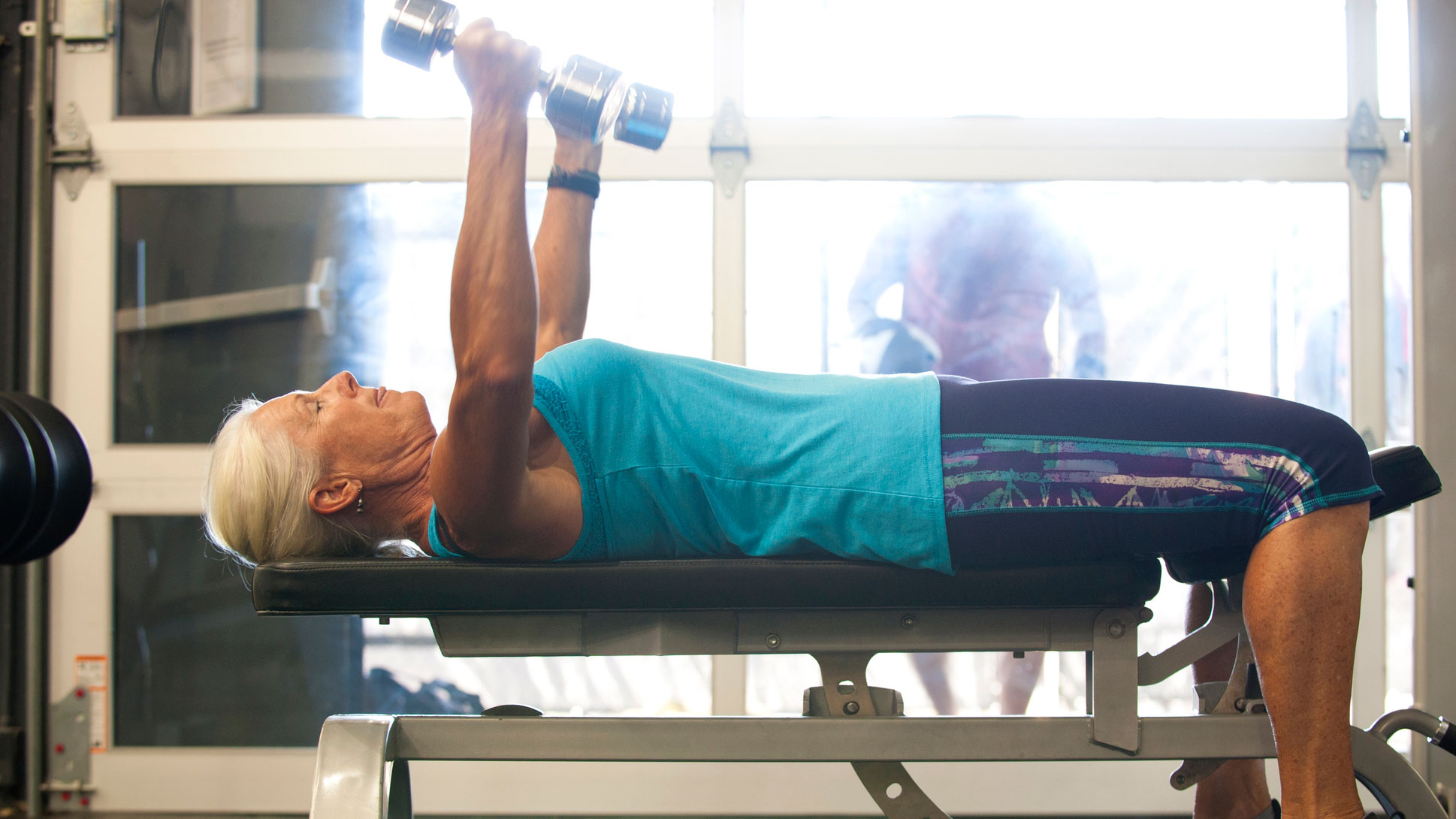
"Whether you start off on a flat bench or you start off at an incline, the first thing you do is make sure you’re in a position that’s comfortable for your level of flexibility," says Allport. "Choose a position which is not going to cause any pain in your shoulders."
For first-time exercisers, raising the bench in your gym to a forty-five degree incline might be more comfortable to start off with. This focuses the move on your upper pectorals, so you'll want to eventually train the lower part of the muscle group on a flat bench too.
Next? if this is your first time on the bench press, steer clear of the larger weights. "Don't start off with barbells," says Allport. "It sounds counter intuitive, but you need the weight to be stable, because if you are stable, you are safe. One group of muscles might be weaker than the other, so dumbbells will reveal if you’re stronger on the left or right side, or whether you have any shoulder issues."
Once you've mastered the barbell and dumbbell versions of the bench press, check out the variations below to switch up your chest workouts.
Variation: Reverse grip bench press
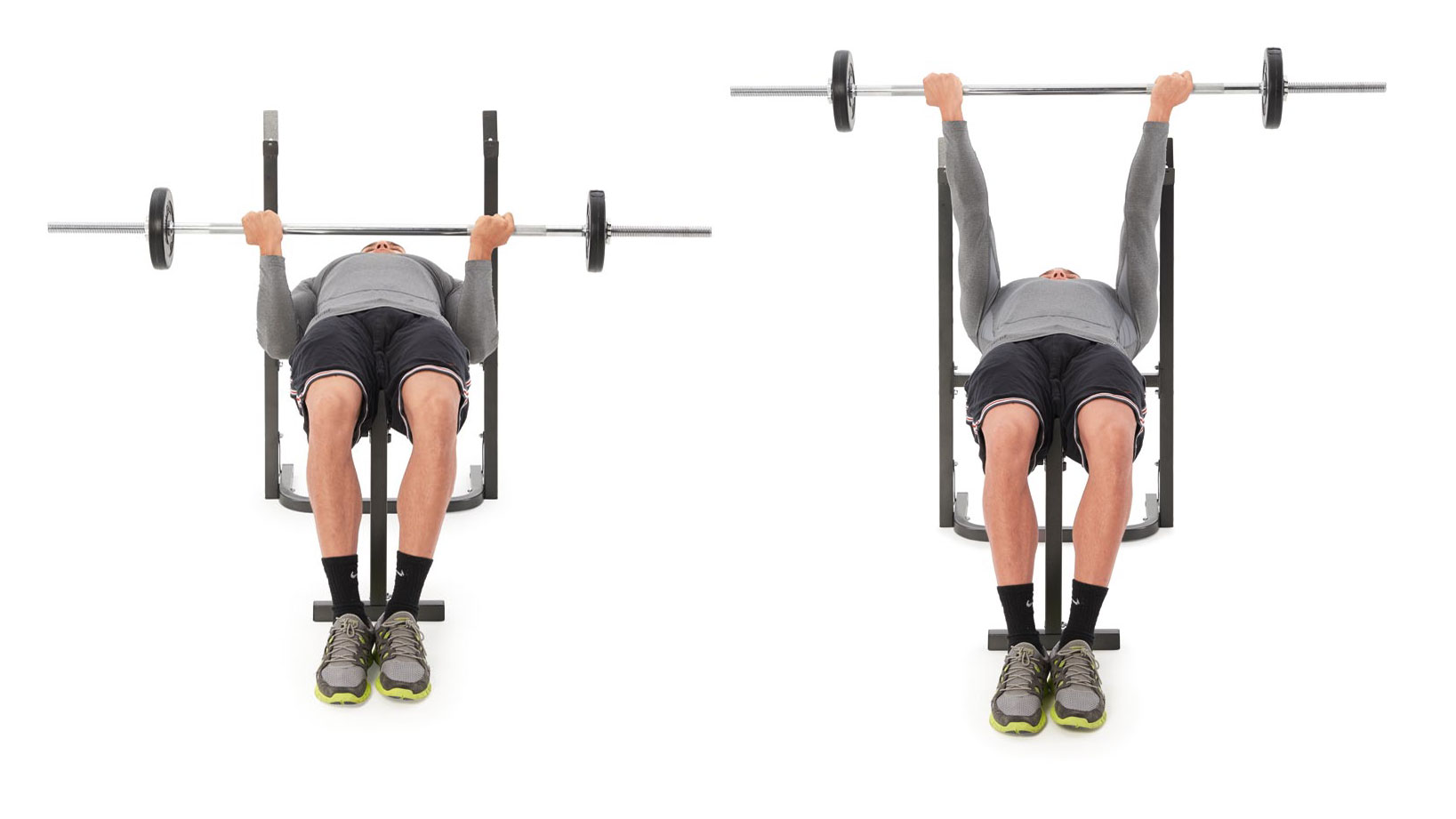
Using an underhand grip, with your palms wrapped round the far side of the bar, ensures a tougher workout for the muscles in the top of your chest.
- Lie flat on your back on a weights bench, with the barbell resting on the rack and your feet on the floor.
- Pick up the barbell with an underhand grip, with your hands placed shoulder-width apart. Lower the barbell down.
- Slowly and surely, push the bar upwards in a straight line, extending your arms. Pause, and then lower the barbell back down to the starting position.
Variation: Dumbbell floor press
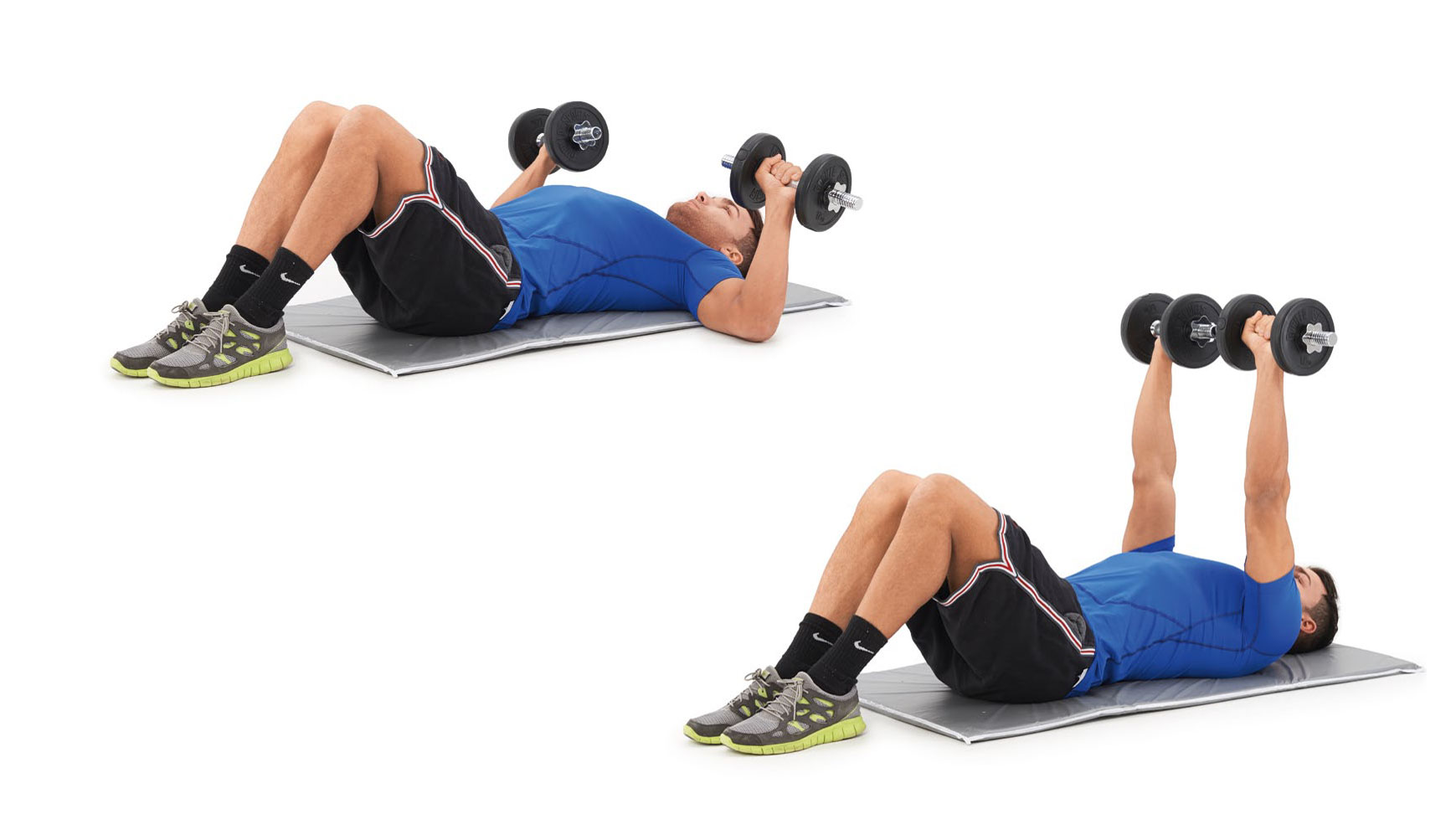
The floor press is a superb alternative for those who enjoy working out at home – all you need is an exercise mat and a pair of dumbbells. The floor supports your weight and stops you lowering your elbows too far when you return to the starting position.
- Lie flat on the back on the floor with your knees bent, as if you were getting into position to start sit-ups. Hold a pair of dumbbells with an overhand grip, just above your shoulders. Your upper arms should be resting on the mat, with your core tightened.
- Push the dumbbells upwards in a straight line as quick as you can.
- Pause, before slowly lowering the dumbbells back to the starting position.
Liked this?
Matt Evans is an experienced health and fitness journalist and is currently Fitness and Wellbeing Editor at TechRadar, covering all things exercise and nutrition on Fit&Well's tech-focused sister site. Matt originally discovered exercise through martial arts: he holds a black belt in Karate and remains a keen runner, gym-goer, and infrequent yogi. His top fitness tip? Stretch.
